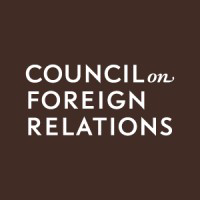About Council on Foreign Relations
The Council on Foreign Relations (CFR) embarked on its journey in 1921, born from a vision to foster a deeper understanding of America's role in the world and to provide a nonpartisan forum for discussing critical foreign policy issues. In the aftermath of World War I, a group of American diplomats, scholars, and business leaders, including figures like Elihu Root and Walter Lippmann, recognized the growing need for the United States to engage more thoughtfully and consistently with international affairs. They envisioned an organization that would bring together diverse expertise to analyze global challenges and inform public discourse, moving away from isolationist tendencies. This led to the formal incorporation of the Council on Foreign Relations on July 29, 1921, in New York City, which has remained its headquarters. From its inception, CFR committed to independence and nonpartisanship, aiming to be a resource for policymakers, academics, and the public alike, rather than an advocate for specific policies.
A pivotal moment in CFR's early development was the launch of its flagship publication, Foreign Affairs, in 1922. This journal quickly established itself as a leading platform for serious debate and analysis of international relations, featuring contributions from prominent thinkers and practitioners from around the globe. Over the decades, CFR expanded its activities beyond publishing. The David Rockefeller Studies Program, its renowned think tank, became a hub for in-depth research, producing influential reports and analyses that have informed U.S. foreign policy across various administrations. The organization also cultivated a distinguished membership, drawing from senior government officials, business executives, academics, and journalists, creating a unique environment for high-level discussion and intellectual exchange. With an additional office in Washington, D.C., CFR has continued to evolve, adapting to new global realities while remaining true to its founding mission: to help Americans better understand the world and the foreign policy choices facing the United States and other countries. Through its meetings, publications, educational outreach, and digital platforms, CFR strives to elevate the conversation on international affairs and contribute to a more informed and engaged citizenry.
FAQs
- When was Council on Foreign Relations founded?
- Council on Foreign Relations was founded in 1921.
- Who is the CEO of Council on Foreign Relations?
- Michael Froman is the CEO.
- What industries or markets does Council on Foreign Relations operate in?
- Council on Foreign Relations operates in the following markets: Political Sciences, International Relations, Think Tanks, Public Policy, Nonprofit Organizations, Foreign Policy, Global Affairs, Publishing, Education, and Government and Policy Advisory.
- How many employees does Council on Foreign Relations have?
- Council on Foreign Relations has 501-1000 employees.
- Where does Council on Foreign Relations have employees?
- Council on Foreign Relations has employees in United States.
- Does Council on Foreign Relations support remote work or working from home?
- Yes, Council on Foreign Relations is a remote-friendly company.
- What employee benefits does Council on Foreign Relations offer?
- Council on Foreign Relations provides 8 benefits to their employees.
- Does Council on Foreign Relations offer a four-day work week?
- No, Council on Foreign Relations does not offer a four-day work week.
- What is Council on Foreign Relations's tech stack?
- Council on Foreign Relations has 2 technologies in their tech stack.
- What is Council on Foreign Relations's website?
- Council on Foreign Relations's website is www.cfr.org.

